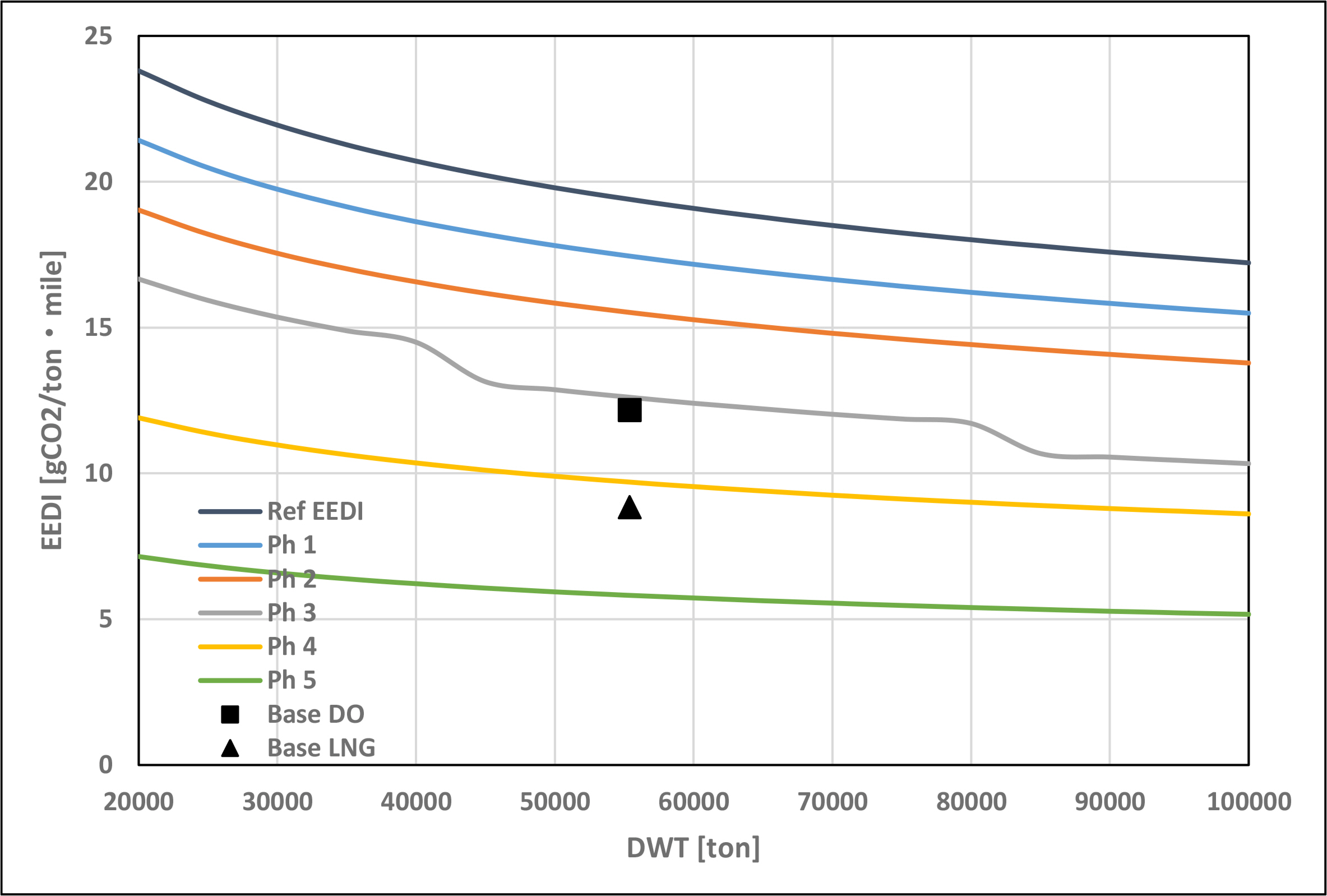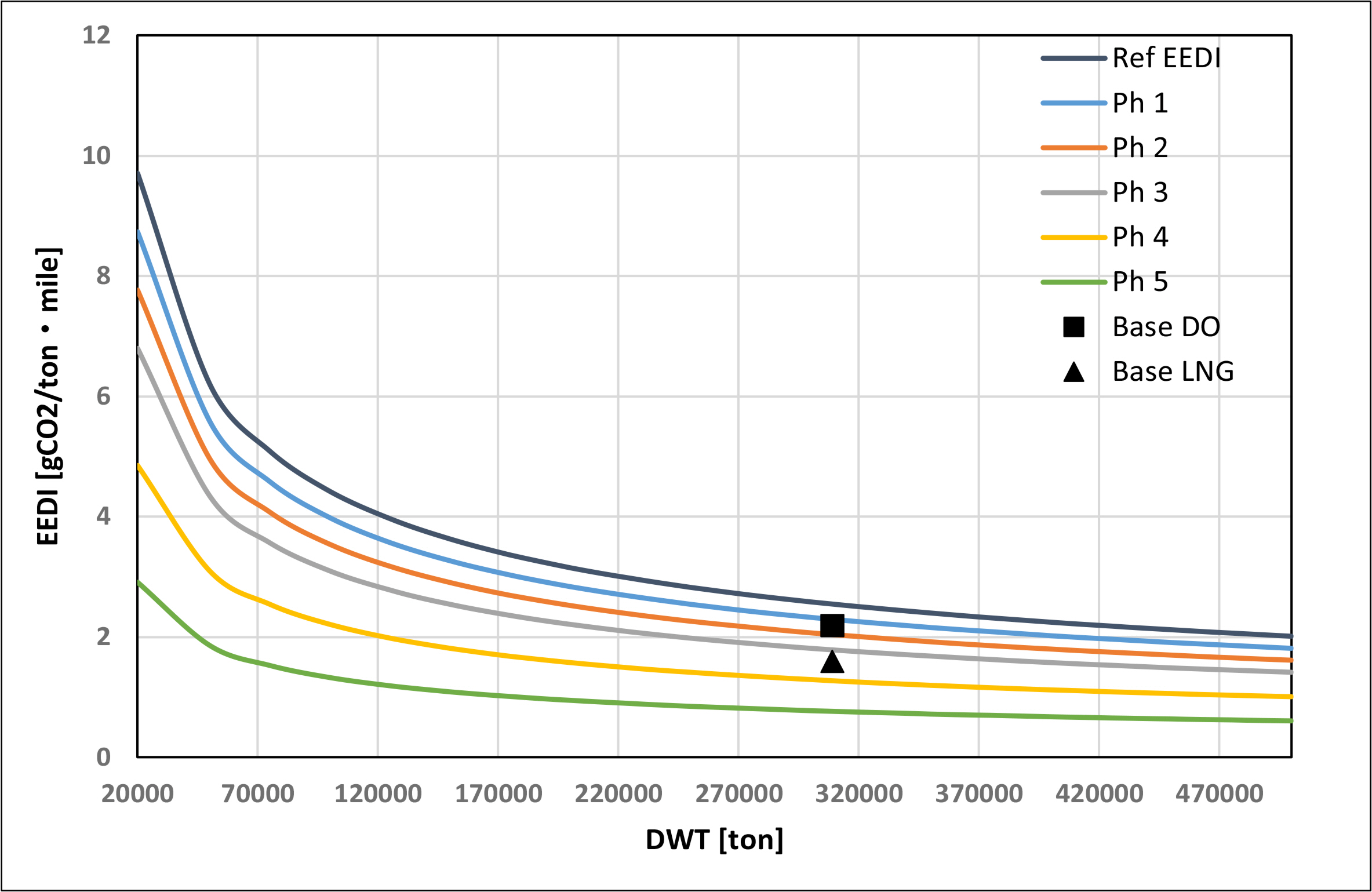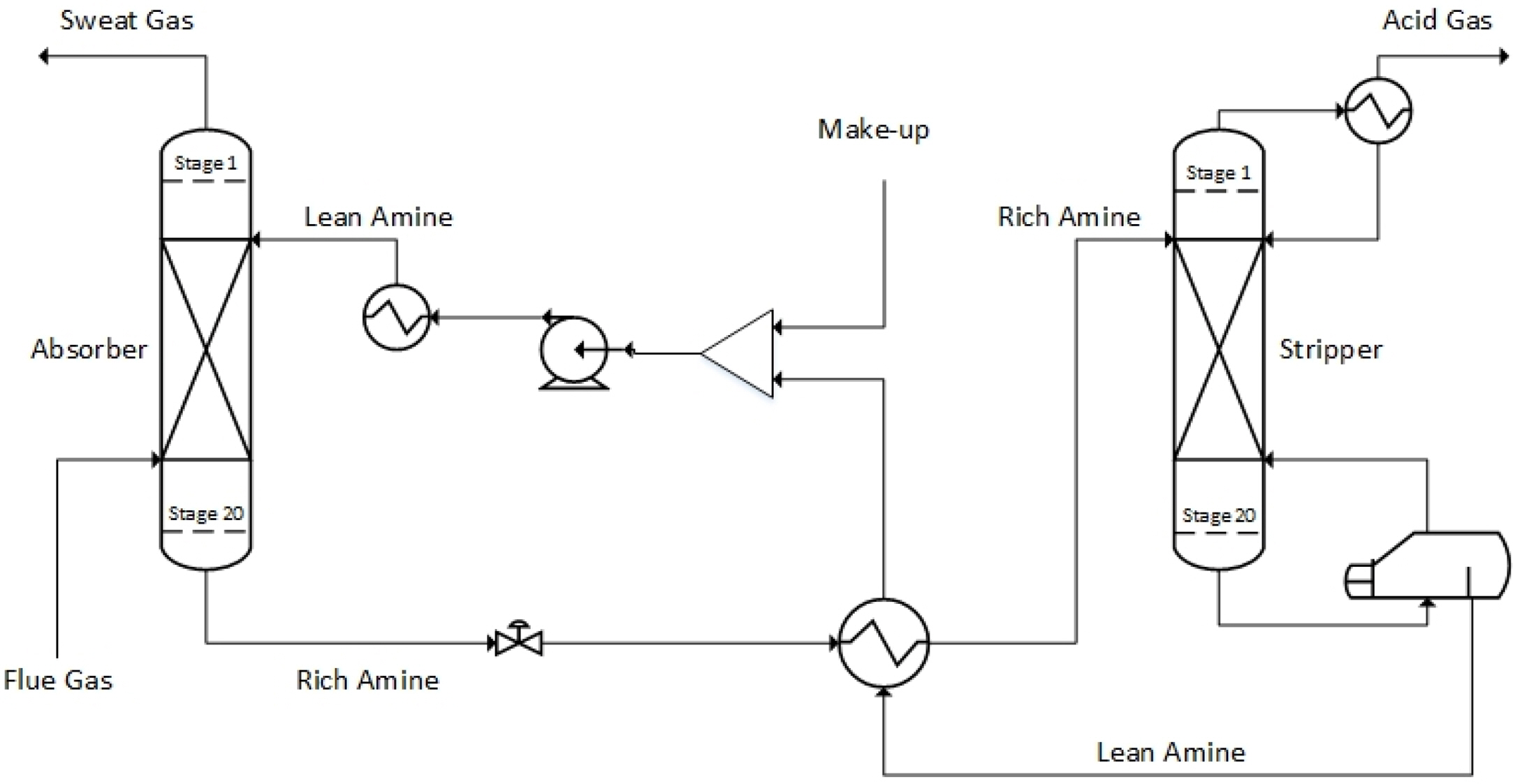1. Introduction
2. EEDI Calculation for KCS and KVLCC2
2.1 Calculation Method
PME : 75% of the rated installed power (Maximum continuous rating, MCR) for main engine (kW)
CF : Conversion factor between fuel consumption and CO2 emission (t-CO2/t-fuel) (see Table 4)
SFC : Certified specific fuel consumption (g/kWh)
PAE : Power of auxiliary engine (kW)
Capacity : Deadweight (DWT) (t)
Vref : Ship speed, measured in nautical miles per hour (knot), in deep water under the condition corresponding to the capacity (nm/h)
2.1.1 Main assumptions for calculation
-
(1) PME
By referring to the main engine power of the target vessel selected in the capacity term below and the engine manufacturer data (MAN Energy Solutions, 2019), the dual fuel (fuel oil + methane) main engine with the most similar value was selected, and 75% of its maximum continuous rating (MCR) was selected. -
(2) SFC
In the case of the main engine, since the specific fuel consumption (SFC), specific gas consumption (SGC), and specific pilot oil consumption (SPOC) values at MCR 75% are specified, they were used as references.In the case of the auxiliary engine, the SFC value was obtained by referring to the engine manufacturer data (MAN Energy Solutions, 2019). The SGC and SPOC of the auxiliary engine were calculated using the same ratio as the SFC ratio between the main and auxiliary engines. -
(3) PAE
PAE can be obtained by multiplying PME by 0.025 and adding 250. -
(4) Capacity
Among the actual ship data, DWT was designated as a range. DWT was determined for actual ships that can obtain the main engine power values within the range. -
(5) Vref
The operating speed for container ships and VLCC was set to Vref.
2.2 Target Vessels
2.3 Calculation Results
2.3.1 KCS container ship
2.3.2 KVLCC2 crude oil tanker
2.4 Technical Measures for Improving EEDI
2.4.1 Speed reduction
2.4.2 ESD installation
(19)
(21)
(23)
(25)
(27)
(29)
2.4.3 Application of both speed reduction and ESD installation
2.4.4 OCCS
3. Results and Discussion
4. Conclusion
When diesel fuel was used under basic conditions, the KCS hull form fulfilled the requirements of up to Phase 3 while the VLCC2 hull form fulfilled the requirements of Phase 1 in terms of the required EEDI.
When LNG fuel was used under basic conditions, the KCS hull form satisfied the requirements up to Phase 4, and the VLCC2 hull form up to Phase 3.
For each target hull form, the fuel change from diesel to LNG exhibited the largest EEDI reduction effect. Among additional measures, decreasing the ship speed resulted in the largest EEDI reduction effect, except for onboard carbon capture and storage (OCCS).
The EEDI can be secured economically through speed reduction, and the IMO regulations can be satisfied at low cost if speed reduction, ESD, and fuel change can be appropriately applied to the ships according to the regulation phase. It is judged, however, that the installation of OCCS must be considered for the Phase 5 regulation, which is the final goal.
Further research is required in the future to optimize the size and energy consumption of OCCS.
For effective response to carbon emission regulations, complex analysis considering and applying various measures and subsequently examining their effects is required. Moreover, since the analysis method can be more complicated when the characteristics of ships are added, further research needs to be conducted to derive further enhanced improvement measures.













